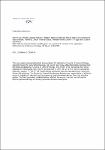RNA helicase retinoic acid-inducible gene I as a sensor of Hantaan virus replication
Lee, Min-Hi
Lalwani, Pritesh
Raftery, Martin J.
Matthaei, Markus
Lütteke, Nina
Kirsanovs, Sina
Binder, Marco
Ulrich, Rainer G.
Giese, Thomas
Wolff, Thorsten
Krüger, Detlev H.
Schönrich, Günther
Hantaan virus (HTNV) causes severe human disease. The HTNV genome consists of three ssRNA segments of negative polarity that are complexed with viral nucleocapsid (N) protein. How the human innate immune system detects HTNV is unclear. RNA helicase retinoic acid-inducible gene I (RIG-I) does not sense genomic HTNV RNA. So far it has not been analysed whether pathogen-associated molecular patterns generated during the HTNV replication trigger RIG-I-mediated innate responses. Indeed, we found that knock-down of RIG-I in A549 cells, an alveolar epithelial cell line, increases HTNV replication and prevents induction of 2',5'-oligoadenylate synthetase, an interferon-stimulated gene. Moreover, overexpression of wild-type or constitutive active RIG-I in Huh7.5 cells lacking a functional RIG-I diminished HTNV virion production. Intriguingly, reporter assays revealed that in vitro-transcribed HTNV N RNA and expression of the HTNV N ORF triggers RIG-I signalling. This effect was completely blocked by the RNA-binding domain of vaccinia virus E3 protein, suggesting that dsRNA-like secondary structures of HTNV N RNA stimulate RIG-I. Finally, transfection of HTNV N RNA into A549 cells resulted in a 2 log-reduction of viral titres upon challenge with virus. Our study is the first demonstration that RIG-I mediates antiviral innate responses induced by HTNV N RNA during HTNV replication and interferes with HTNV growth.
No license information

